|
The fundraiser is going well, with $1250 raised thus far and just $550 to go to meet our goal. Many thanks to those who’ve donated already and for those who haven’t, YOUR donation could be the one that pushes us to the goal—so what’re you waiting for? Time’s a-wastin’!
Only one new intake this week, an adult great horned owl with a massive eye injury. It was an older injury: It appeared somehow his eye may have gotten injured and infected in the wild and by the time he was found sitting in the middle of the road, it had ruptured. Essentially, he had no eyeball left; when I gently pried open the eye to see the extent of the damage, my fingers were resting on the exposed orbital bones. Probably because of this, he was also near-starvation thin, but he was still alert. He was offered mice, which he eagerly ate. The plan was to check with DNR and FWS to see if the regs on euthanizing a one-eyed bird could be waived if the remains of the eyeball were surgically removed and the bird placed as an educational ambassador (one-eyed birds are frequently successfully used as ed birds), but the poor fellow died overnight. I suspect the infection from the ruptured eye had spread throughout his system.
Georgia’s back to more temperate daytime and nighttime temps, so the screech has been back in the mini-pen for the past week. He’s lost all his damaged tail feathers but is showing no signs of going through a molt. His overgrown talons are slowly being trimmed back, and the bumblefoot in his right foot is showing slight improvement. His will be a long road of recovery, but I’m hopeful he’ll eventually be releasable sometime next year. Let his situation be a constant reminder that all wildlife requires professional care when in captivity; the wrong diet and housing can ruin that bird or mammal’s chances of release and, indeed, often lead to the need for euthanasia.
0 Comments
Of course, even when there’s no weekly update, our work at LWR continues, and part of that work this past week was to work on creating a fundraiser. This is our first fundraiser this year, and if we meet our $1800 goal, it should be our last for the year—that’s the plan, anyway!
As for our actual birds, the screech had to be brought inside last week due to the cold snap we experienced pretty much throughout the South. His severely compromised feathers provide no insulation against the cold, so this will be the pattern throughout the winter: in the mini-pen when the weather is fairly moderate and inside when it gets too cold. Those overgrown talons also needed trimming back, which is a slow process, and his right foot is swollen, an indication of bumblefoot, caused when one of those overgrown talons pierced the pad of his foot. That has to be treated daily, so his being inside was best for that, too. So overall, the poor fellow has numerous issues going on at the moment, none of which will be cleared up overnight.
During our “downtime” we also had a red-tailed hawk come in, emaciated and with a large wound at the base of his tail. Despite being given pain meds and having topical meds applied to the wound, he continued to pick at it, which meant it continued to bleed. At the end of his day of intake, it appeared we finally had both the picking and bleeding under control but during the night the bleeding started back and the next morning the pad in his box was saturated; he bled out overnight. And yes, it sucked big time to find him dead the next morning; I don’t like losing birds, and I especially don’t like losing red tails.
And late last week, LWR received a call about an injured barred owl that was at a local school. The teacher had the bird in a classroom, apparently unsecured from the students, as when she called LWR she indicated a child had been scratched when he or she tried to pick the bird up. As teachers cannot leave their schools during the day, as a general rule, I told her to bring me the bird after school let out; meanwhile, I canceled a meeting to be available at the end of her school day. By dusk, no bird had arrived. No message. I contacted the person and was informed she’d put the injured bird out on the school grounds, as she couldn’t fit delivering it to LWR into her busy schedule.
People, first off: SECURE any wildlife you find and immediately place it in the darkest, quietest place you can find. A classroom full of noisy children doesn’t qualify as quiet or dark. Second, in no scenario is it acceptable to simply release an injured bird in unfamiliar surroundings. THIS IS A DEATH SENTENCE for that bird. Third, if you KNOW you cannot bring a bird to LWR or any rehabber, tell us this up front; most of us have volunteer transporters who can pick up wildlife for us and get it to us. Finally, if you plan to bring the wildlife and something comes up to prevent this, LET US KNOW. We have lives, too, and when we disrupt our schedules to be available and are left hanging, it’s extremely frustrating. A simple call or text saying you can’t make it after all will give us a chance to mobilize one of the previously mentioned volunteer transporters. Rant over...for this week... The screech who was held illegally from July through late September will be paying for human arrogance, ignorance, stupidity or error—whatever you prefer to call it—for quite a while. Last week I was infuriated about it; this week, I’m more saddened for him than anything else. His feathers—his tail feathers in particular, but all his feathers in general—are in godawful shape. Providing a shallow water pan for him to bathe in once he was in the mini-pen only reinforced their awful condition. Additionally, his talons are so overgrown he can’t grip the perch properly. I’m trying to let the wood of the perches and roost shelf wear down the talons naturally to avoid further stressing the poor fellow, but I may end up having to trim them by hand. And his flight muscles are so underdeveloped that if he lands on the floor of the flight pen, he can’t flit up to the low perch. That, at least, should resolve itself as he now has the room to fully utilize his wings. So what’s in his future? Potentially a long period of captivity while we wait for him to molt the damaged and most likely weak feathers and grow in a new set of undamaged and stronger feathers. Normally screeches molt in July/August but their molt can extend into October/November, so maybe having him outside in natural weather conditions in the mini-pen will stimulate this traumatized little fellow to begin this process...unless he’s already done so while being held illegally. Then we’re looking at a year before he molts again...Y’all keep your fingers crossed he begins to molt soon so he can regain his long-denied freedom ASAP. Y’all are well aware of how much I adore screeches because of their fierce little attitudes. This poor fellow currently has no fierceness, only fear, and it breaks my heart.
There will be no update next Sunday, Oct. 16. I have other obligations that day. That would be owls and vultures, of course. (And if any-blasted-body dared even THINK about bats as birds, hand in your naturalist card. Now. I’m not kidding.) Early in the week, a red-phase screech owl came in after having been held illegally since July. Although the finders indicated a foot injury, when the bird arrived at LWR both feet turned out to be fully functional, although his feathers are a mess. More on him later, but first let me hop on my soapbox for a minute or two. I’m not even gonna get into the full rant about the public keeping birds illegally; you’ve heard it all before. What I will do is remind y’all that rehabbers don’t get paid for what we do; we are not salaried employees of DNR or FWS. Most of us have actual jobs to pay our bills. And yet there seems to be a widely shared opinion that we should drop everything we’re doing, including our PAYING jobs, to drive all over the state to pick up the wildlife the public finds. News flash, people: Georgia’s a big ol’ state and there aren’t many of us out there who’re properly permitted. We can’t abandon the wildlife currently in our care to drive up to 4-6 hours round-trip to pick up wildlife, and even if we could, we can’t just stop working to do so. And even if we could leave behind those other animals in our care and stop working for up to half a day, we still need MONEY for gas to pick up the wildlife and then to feed it. Less than 6% of the people who bring us wildlife in a given year donate toward its continued care, and of those <6% who do donate, it’s most often in the range of $25 to $50, and quite frequently not that much—and I can promise you that doesn’t come close to covering care for even one week in rehab for one bird. But no rehabber denies care because a finder can’t pay; that’s not how this undertaking operates. Further, there are myriads of “armchair quarterbacks” out there who think they have the right to denigrate, attack and threaten us because we refuse to become homeless in order to pick up wildlife, and we utilize our colleagues at DNR and FWS to confiscate and transport for us when the need arises, particularly when a caller indicates they’ve had the wildlife for weeks or months. By the terms of our permits, we’re required to report illegal activity—and keeping wildlife long-term without a permit is illegal on both the state and federal levels; further, when DNR or FWS confiscates illegally held wildlife, they have the legal right to euthanize on the spot. It is only their close working relationship with rehabbers that prevents this. On a personal level, I can promise you your “hurted feewins” are less important to me than the permits I worked so hard to obtain and maintain and the trust that DNR and FWS people have in me. My very “favorites,” though, are the sanctimonious types who are “horrified, I tell you, horrified!” that rehabbers dare to euthanize wildlife if its injuries preclude release. Again, speaking personally, I’m up-front about that possibility on the LWR website. From a purely HUMANE point of view, if the bird’s injuries would mean a life of discomfort, yes, I euthanize. If the bird could survive and potentially be used as an educational bird, I, my vets, and at least one other rehabber evaluate the bird’s overall personality to determine if it’s suited for ed bird status. Some birds are too stressed by human contact and captivity to ever make good ed birds; euthanasia is a kinder option. Humane issues aside, LEGALLY, by the terms of our permits, rehabbers are required to euthanize nonreleasable wildlife that cannot be placed or function as ed animals. So again, I will not be inhumane enough to sentence an unhappy/pain-filled bird to a life in captivity, nor will I break the law to allow the public to get the warm fuzzies. Nature is cruel. Wildlife often comes into rehab in such condition that we cannot save it, or if we did, it would be inhumane to that wildlife to do so. If the ONLY release I can offer the birds who come into my care at LWR is a release from suffering, I will give them that release. And I can promise you any rehabber worth his/her salt will tell you the same thing. It never gets easier, even when you know it’s the right decision. It hurts, every single time. But it is THE RIGHT, THE LEGAL AND THE HUMANE course of action when it’s the only means of ending suffering. If you’ve never had to make that decision on a regular basis, don’t you DARE criticize rehabbers for making those tough calls. Hopping off the soapbox now, we return to the illegally held screech. As I said, his feathers are a mess and he’s very paranoid, more so than is normal for a screech. Due to the threat of bad weather from Hurricane Ian, he’s been kept inside all week but tomorrow he’ll be moved to the mini-pen to see how he does. If the feather damage isn’t too severe and he can be flight conditioned fairly quickly, he’ll be released ASAP. My fear is that he may need to remain in care until he molts—not ideal for an already-stressed bird, but in the mini-pen we can minimize human contact and hopefully lessen the majority of his stress. We’ll see... Here he is on intake: And these photos were taken after he was moved to a clean box with a perch. A mammal rehabber in another county sent a barred owl to LWR late in the week; her vet’s x-rays showed no fractures but his left wing droops badly. I’m thinking coracoid fracture. I may ask Smalley’s to do a trunk x-ray to see if we can see that fracture, although they often don’t actually show on x-rays. Might be worth a try; we might get lucky. And of course, the vultures are still hanging around, although not as often and less frequently together.
|
Archives
April 2023
Categories
All
|

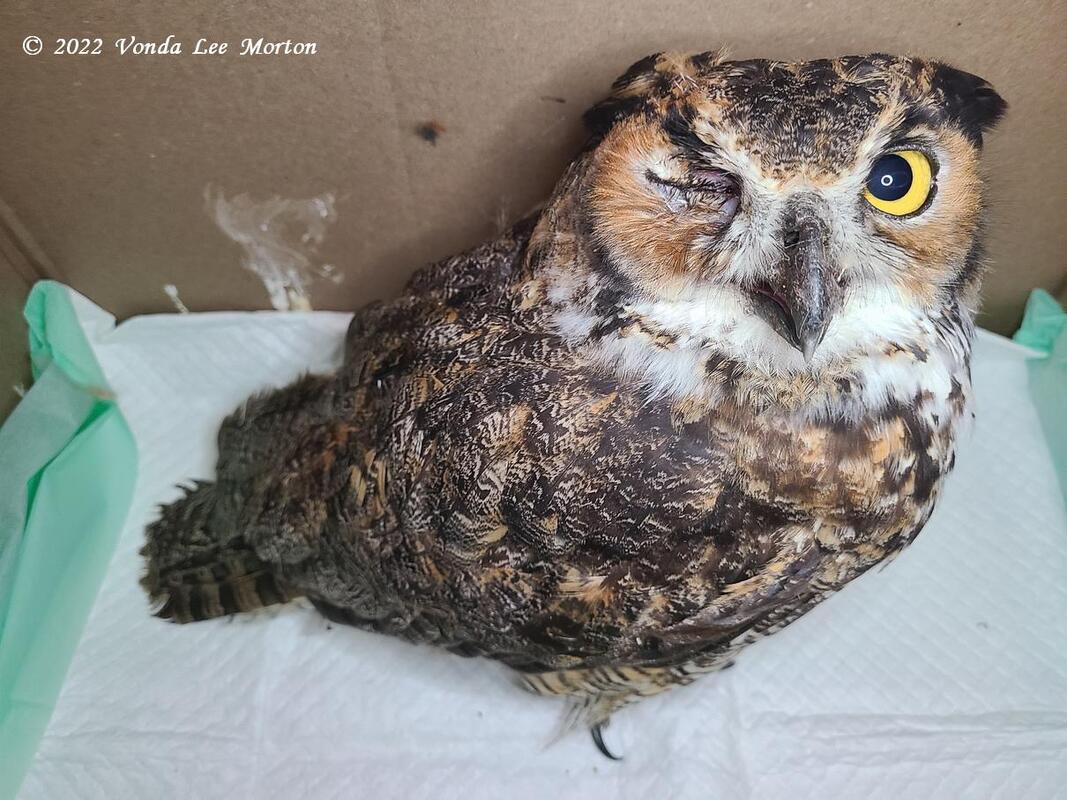
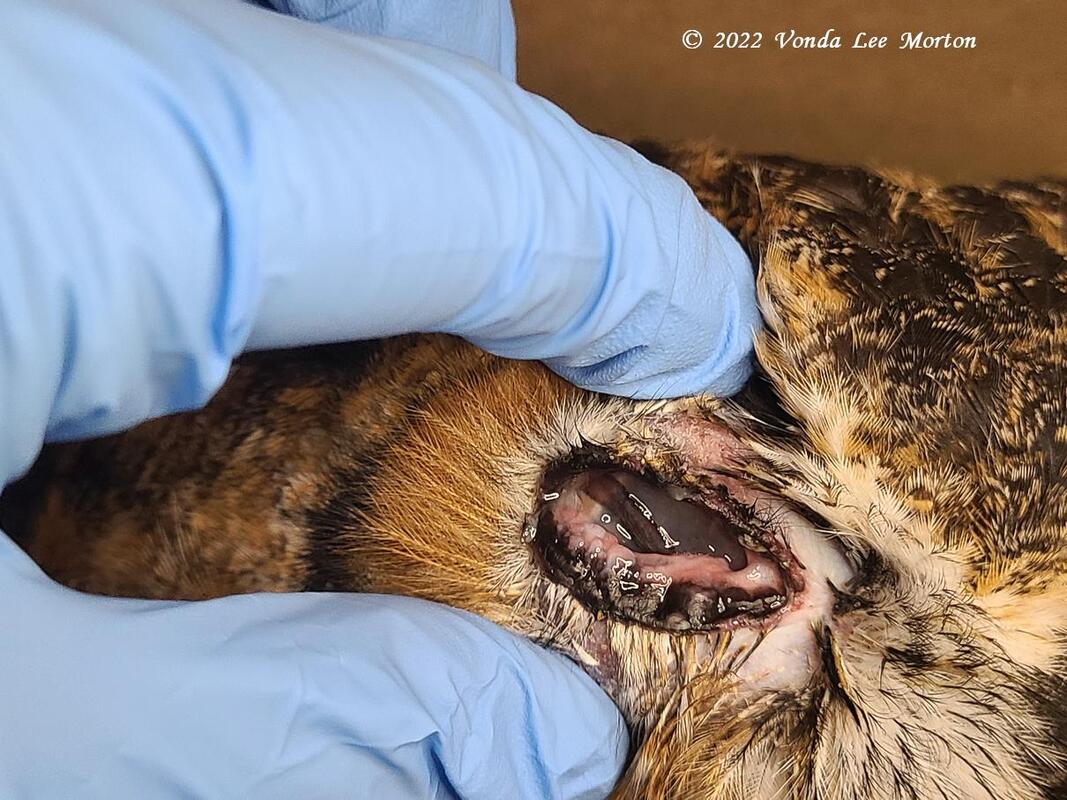
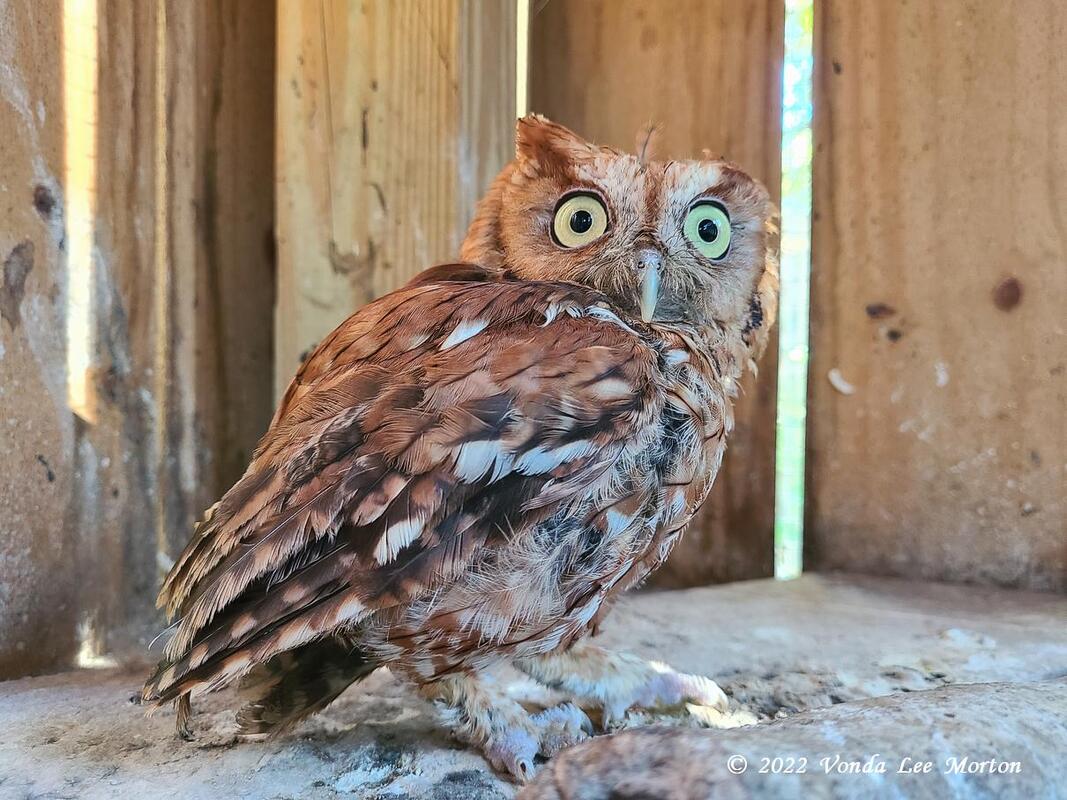
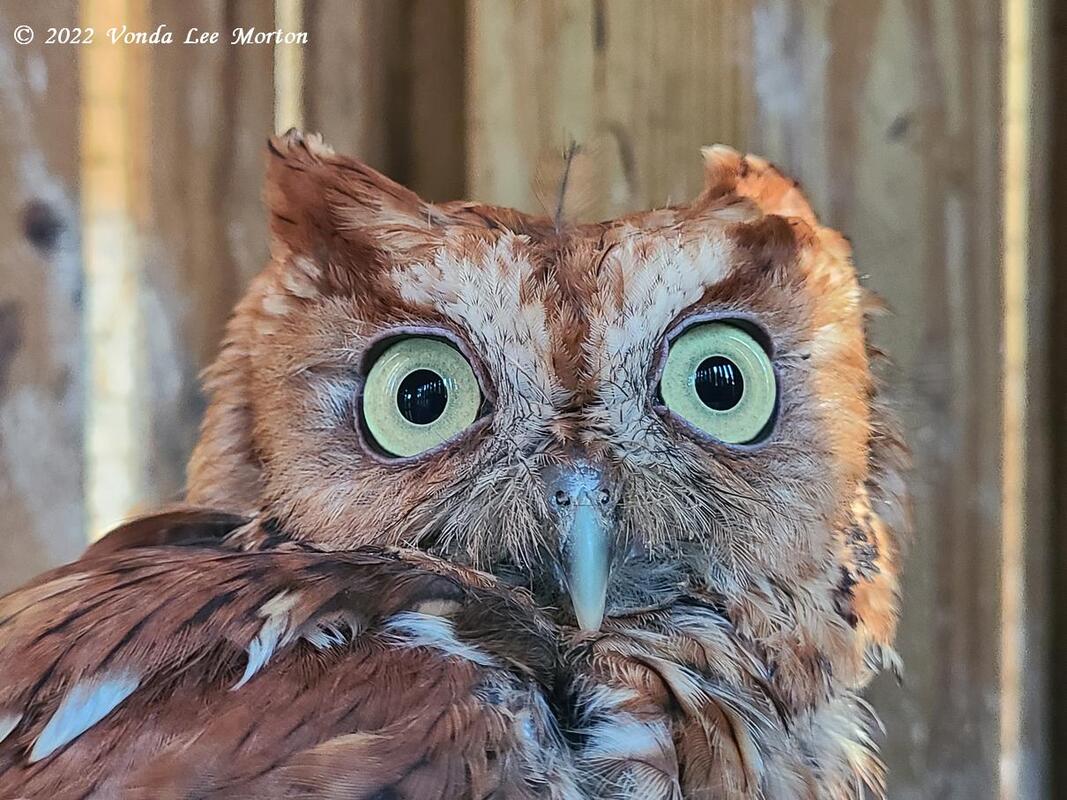
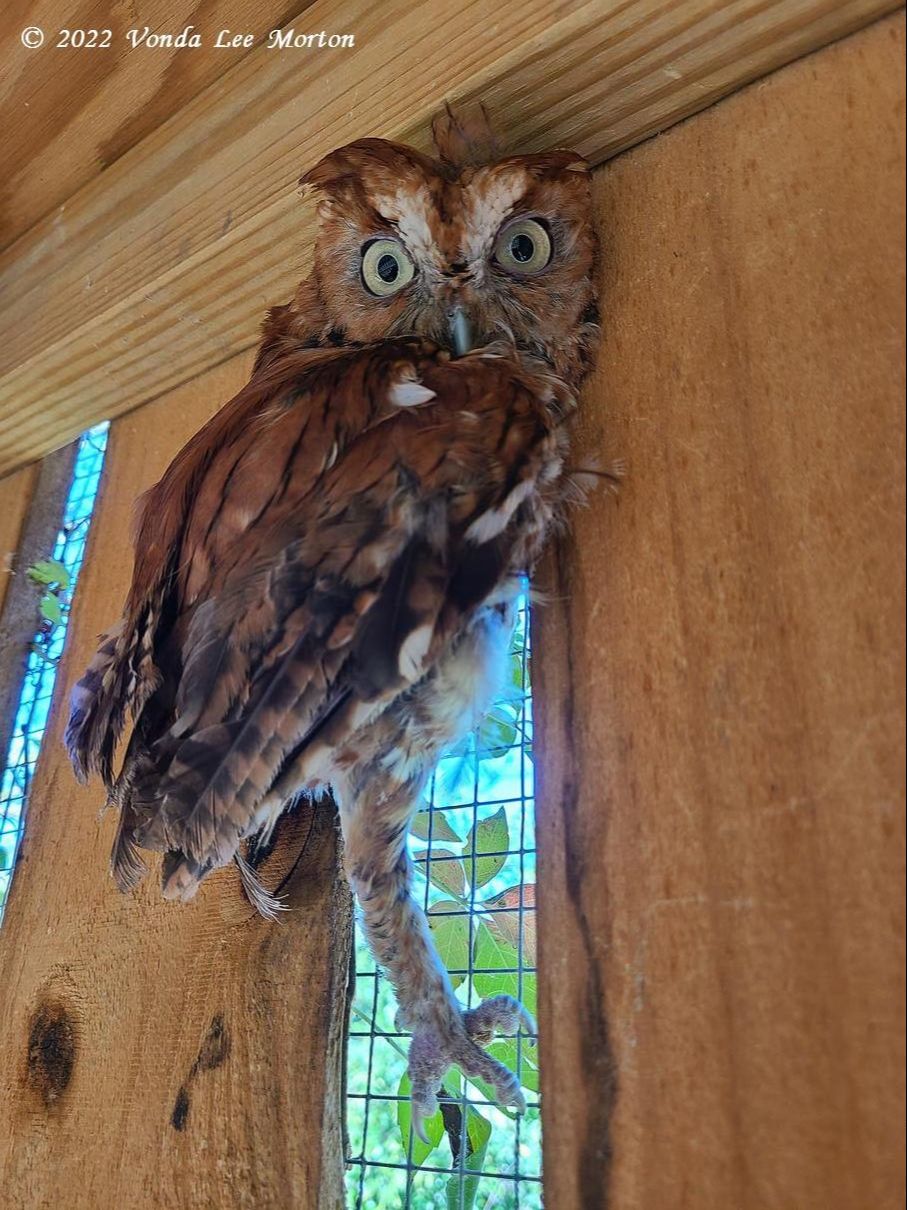
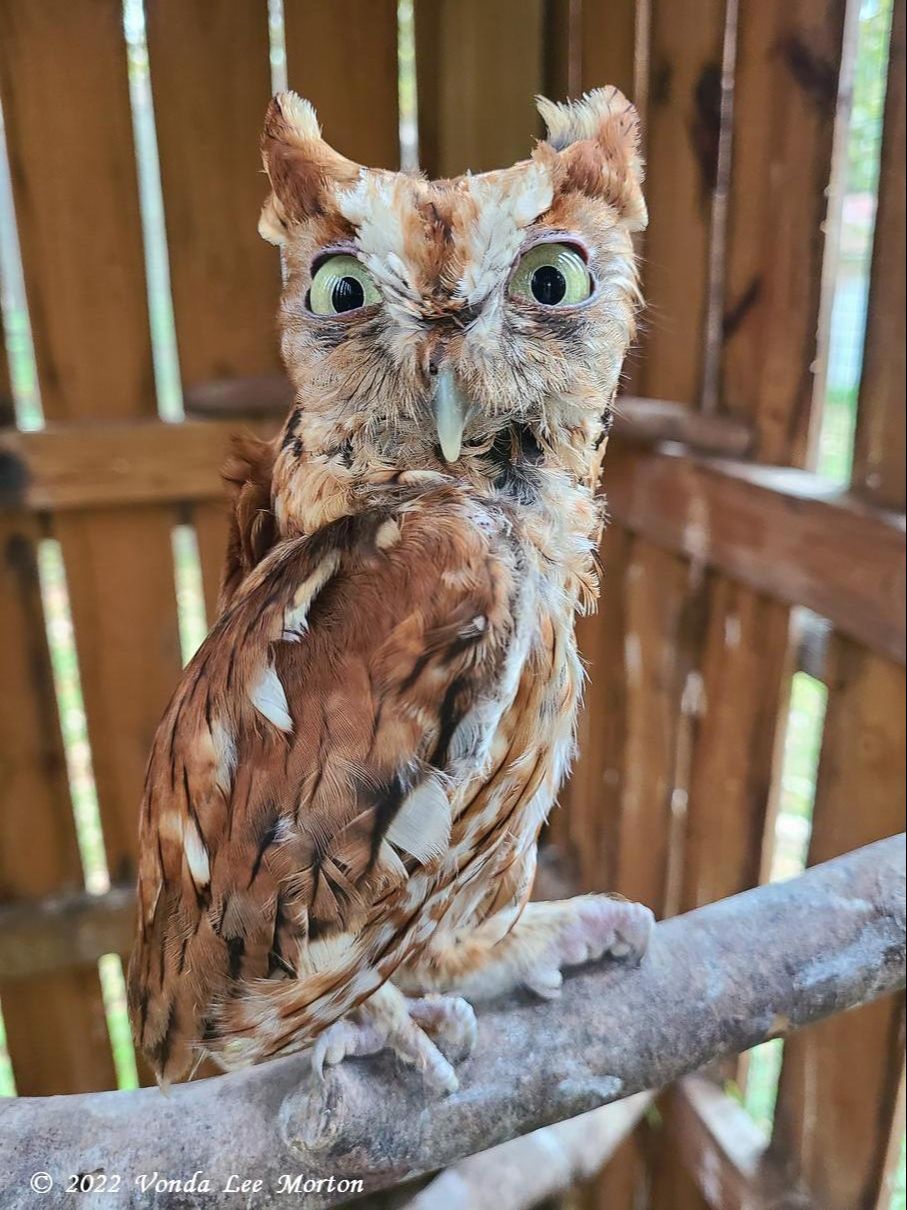
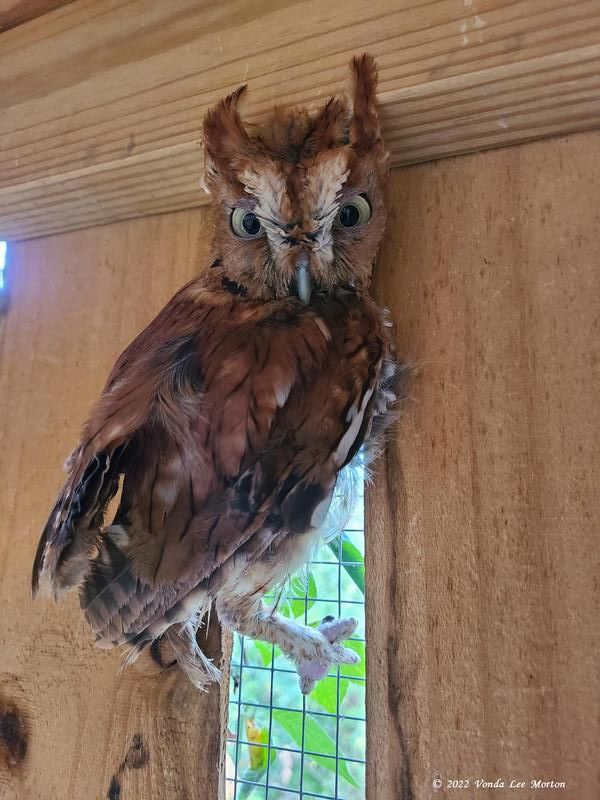
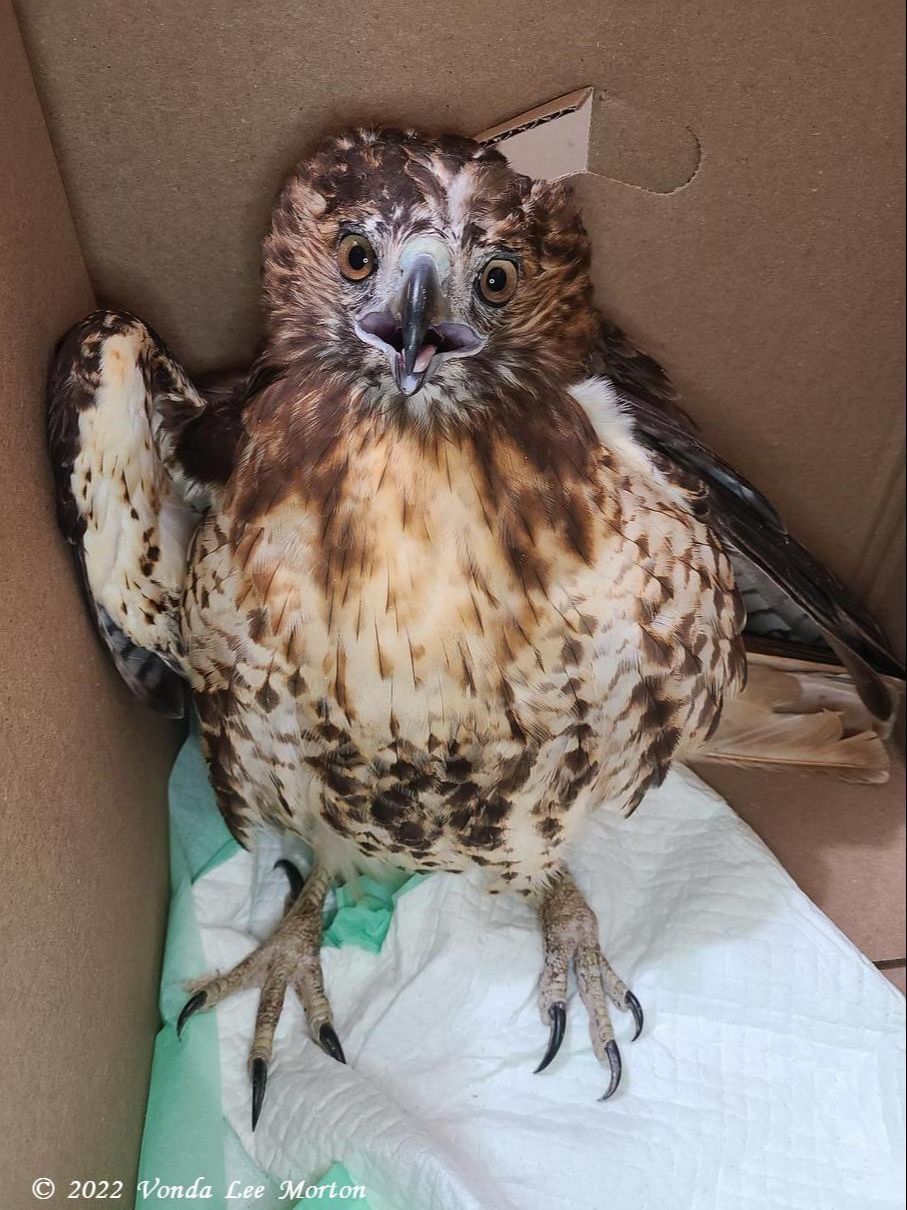
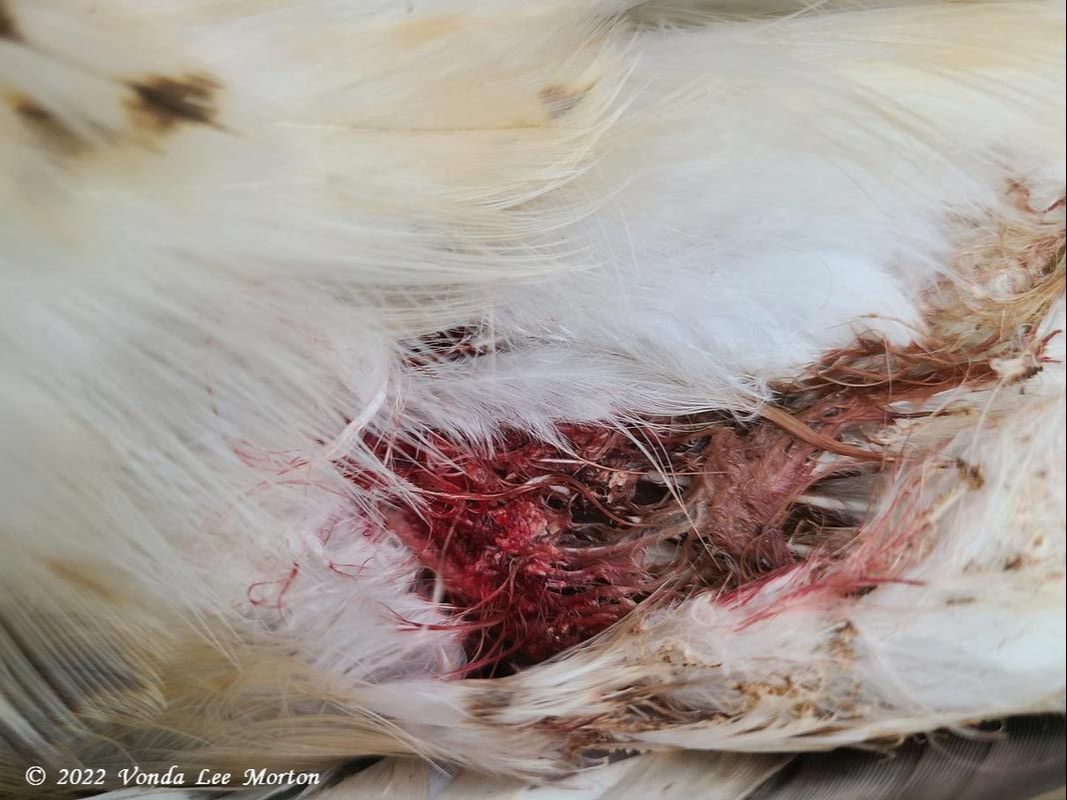
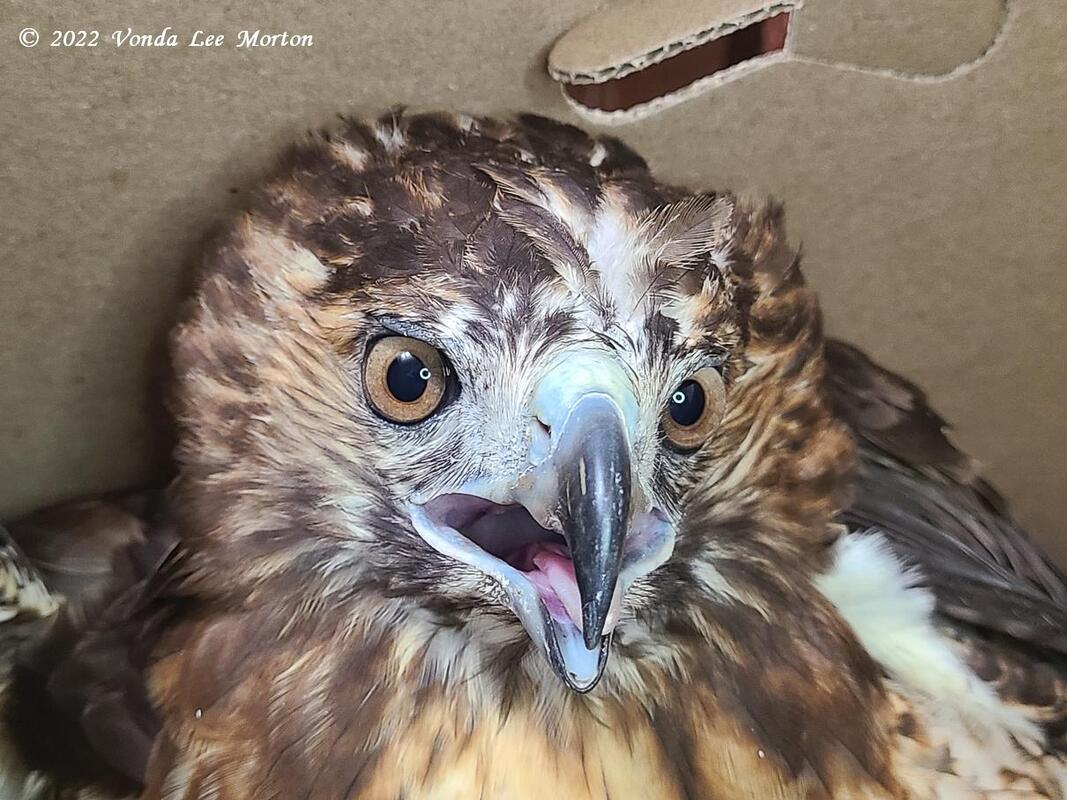
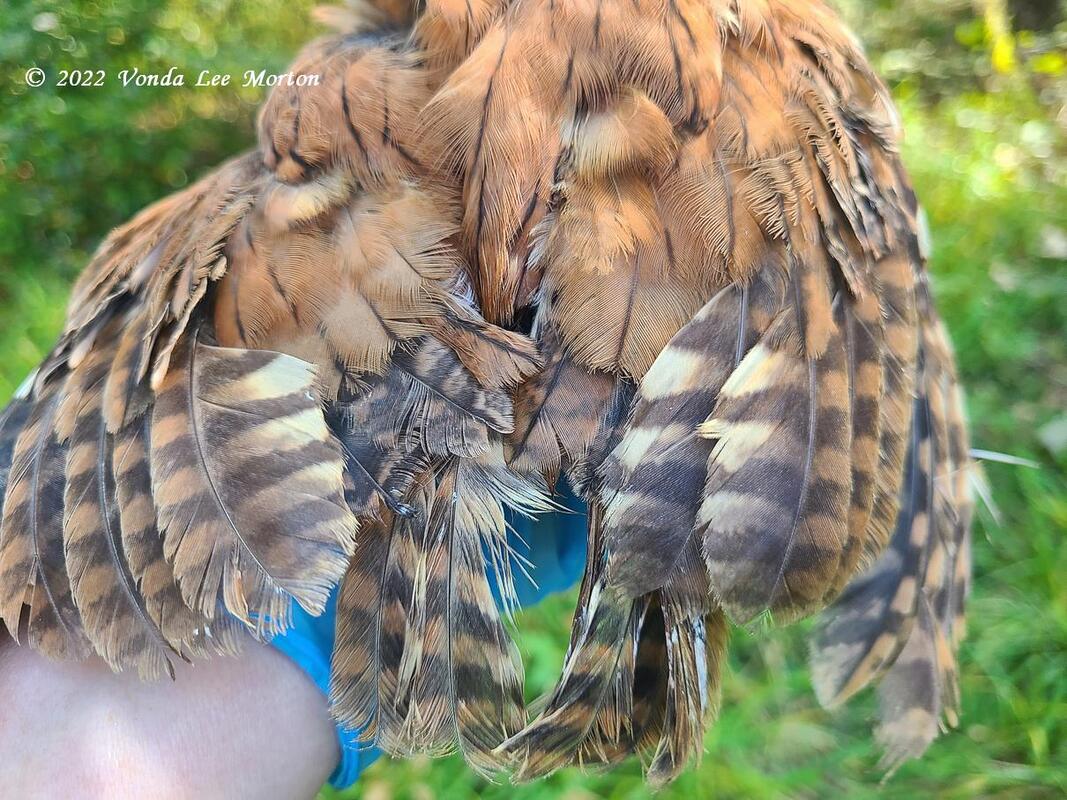
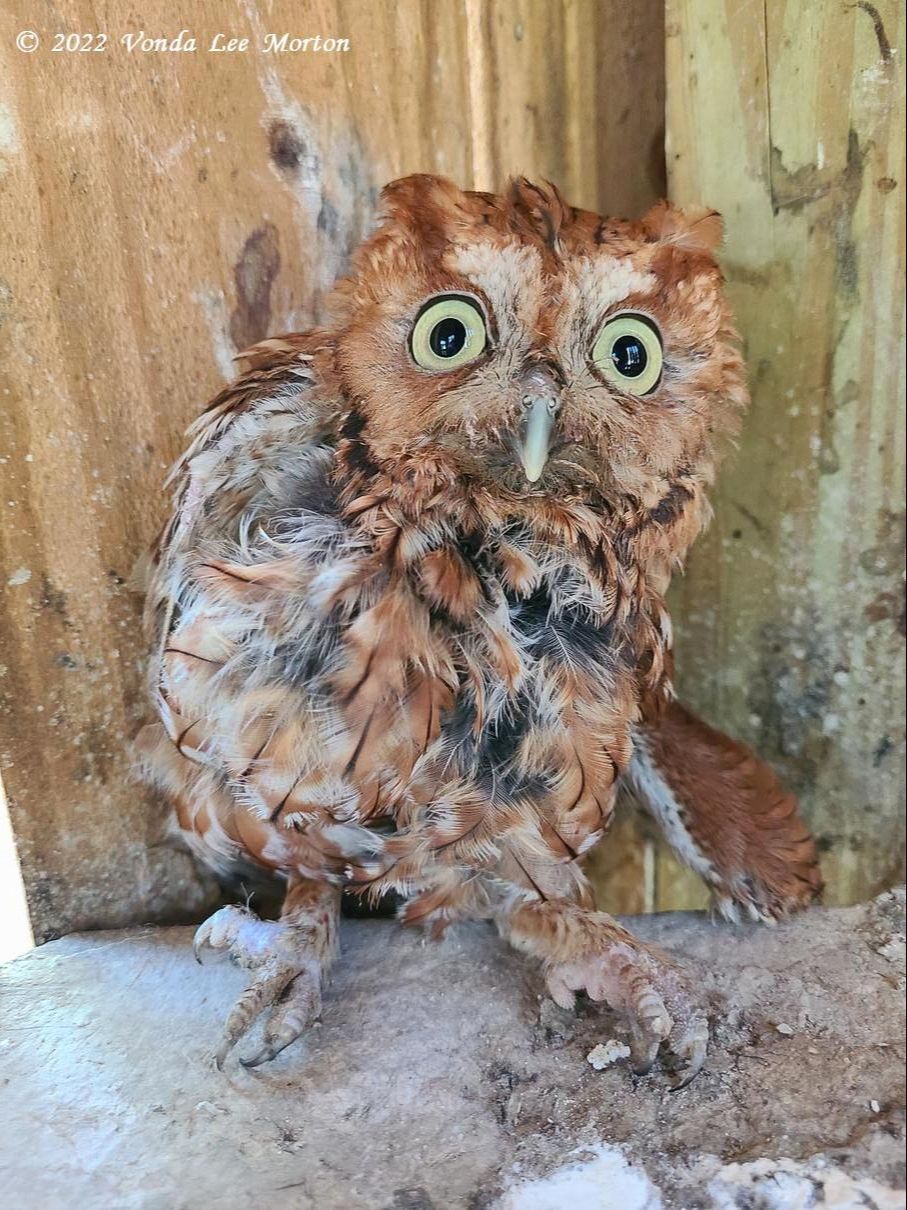
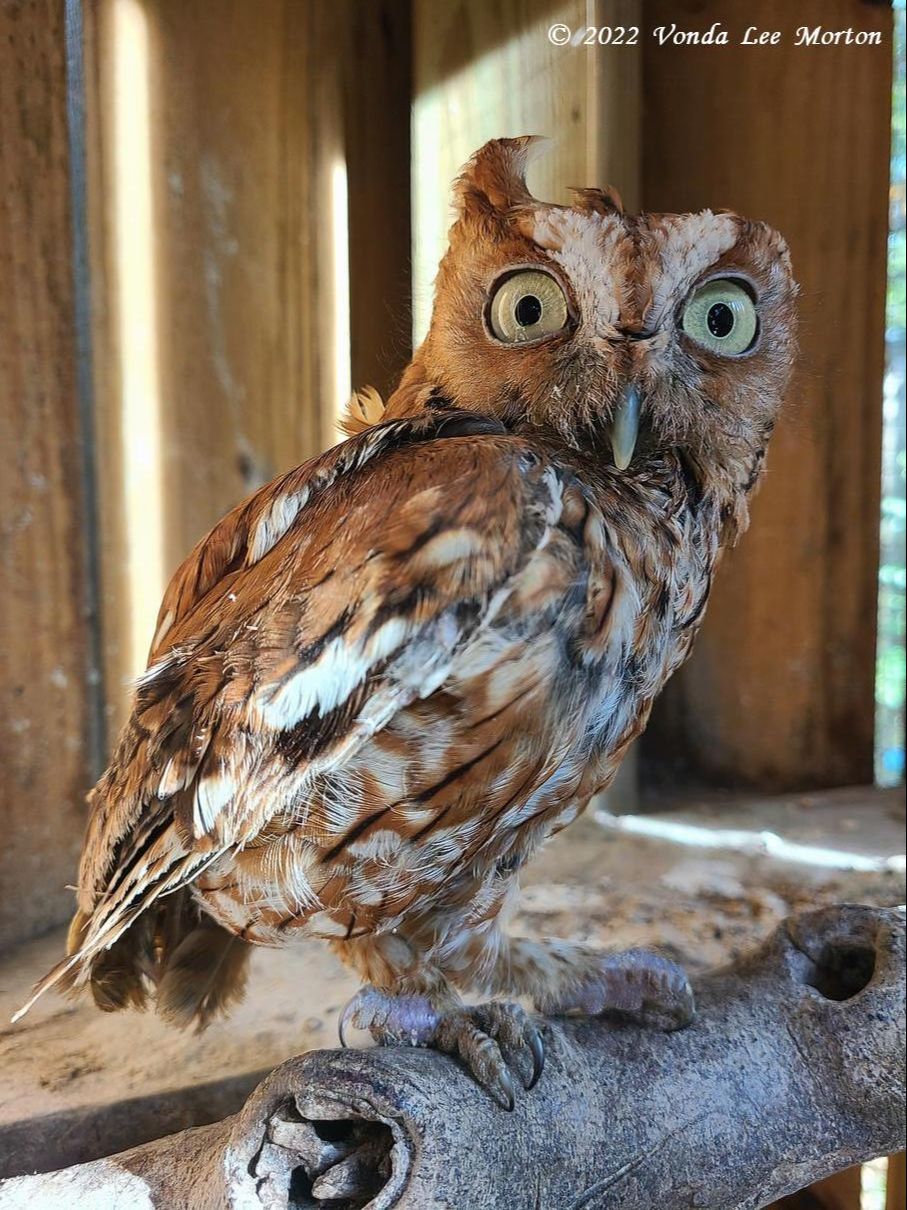
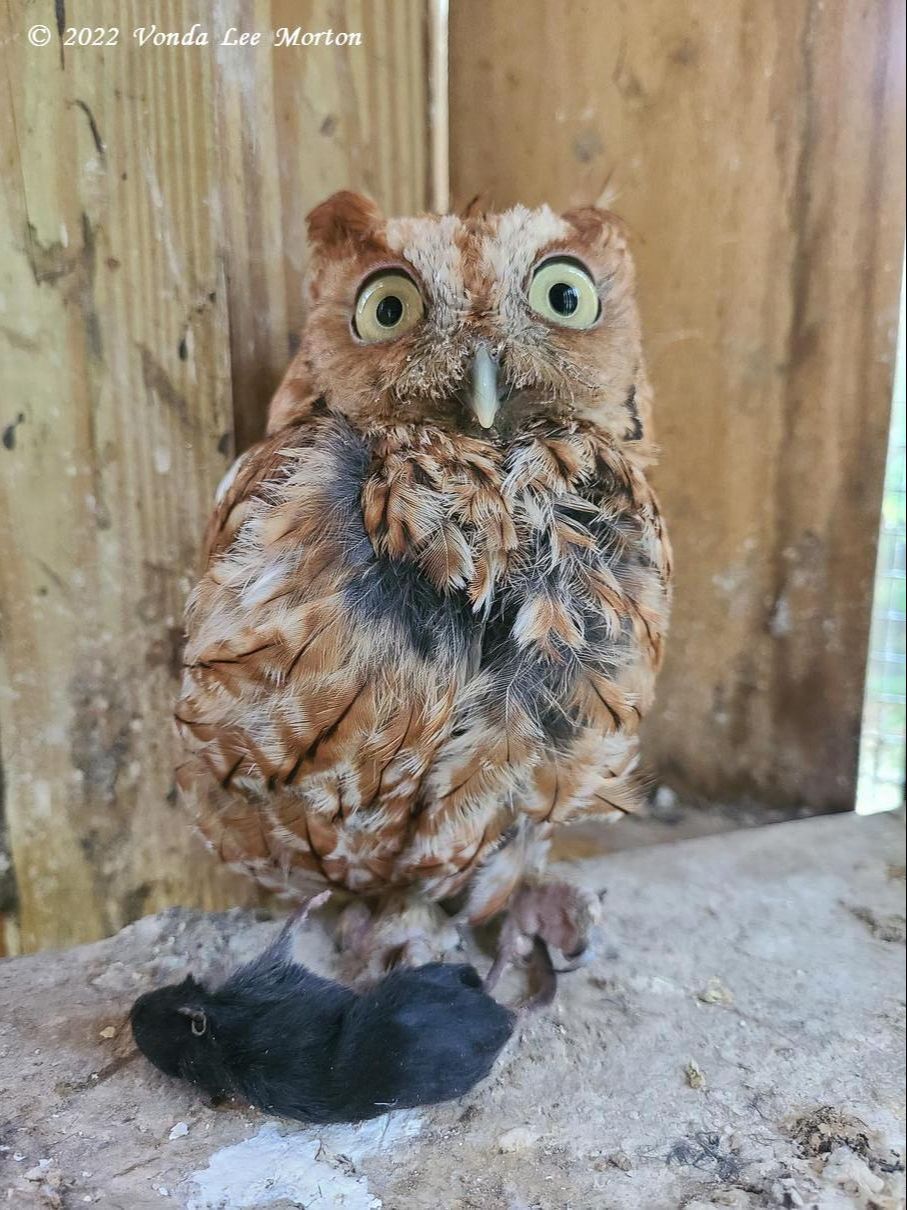
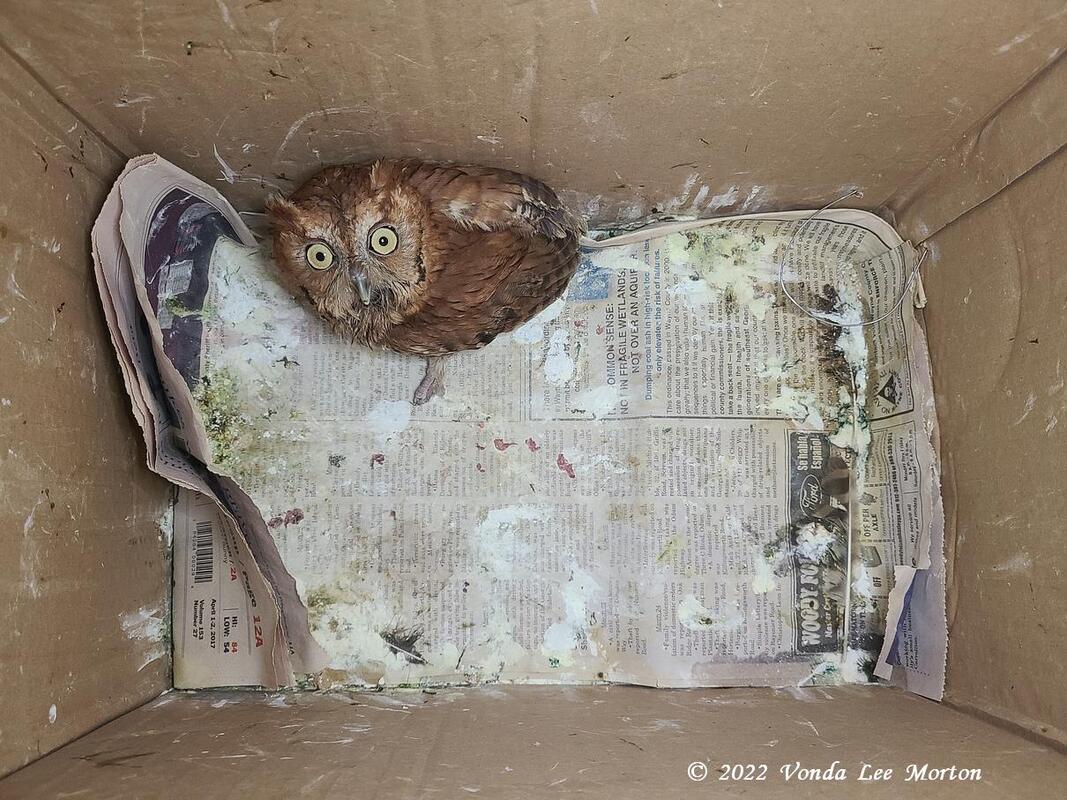
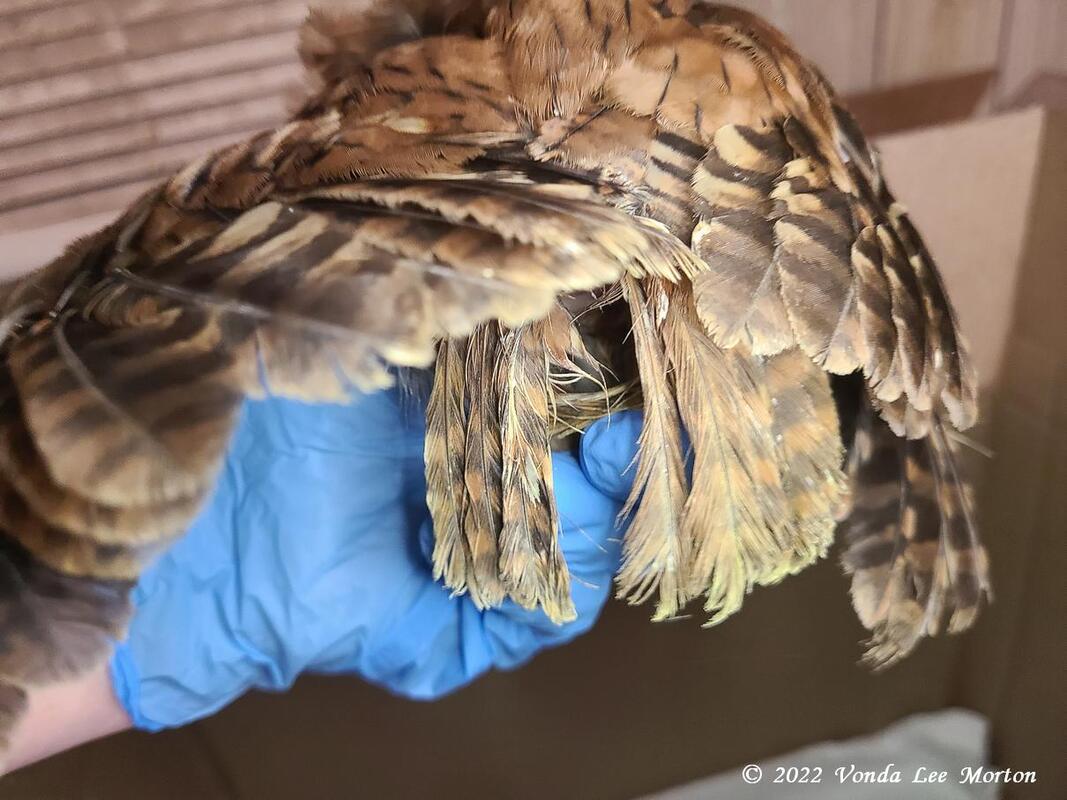
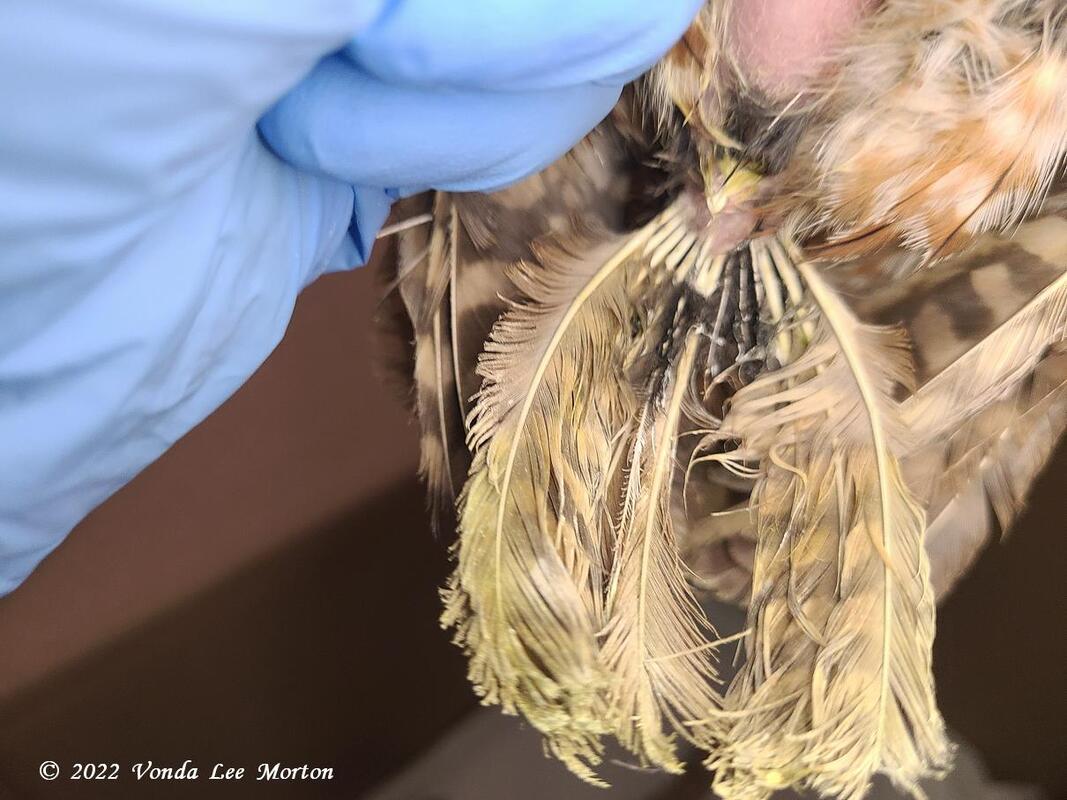
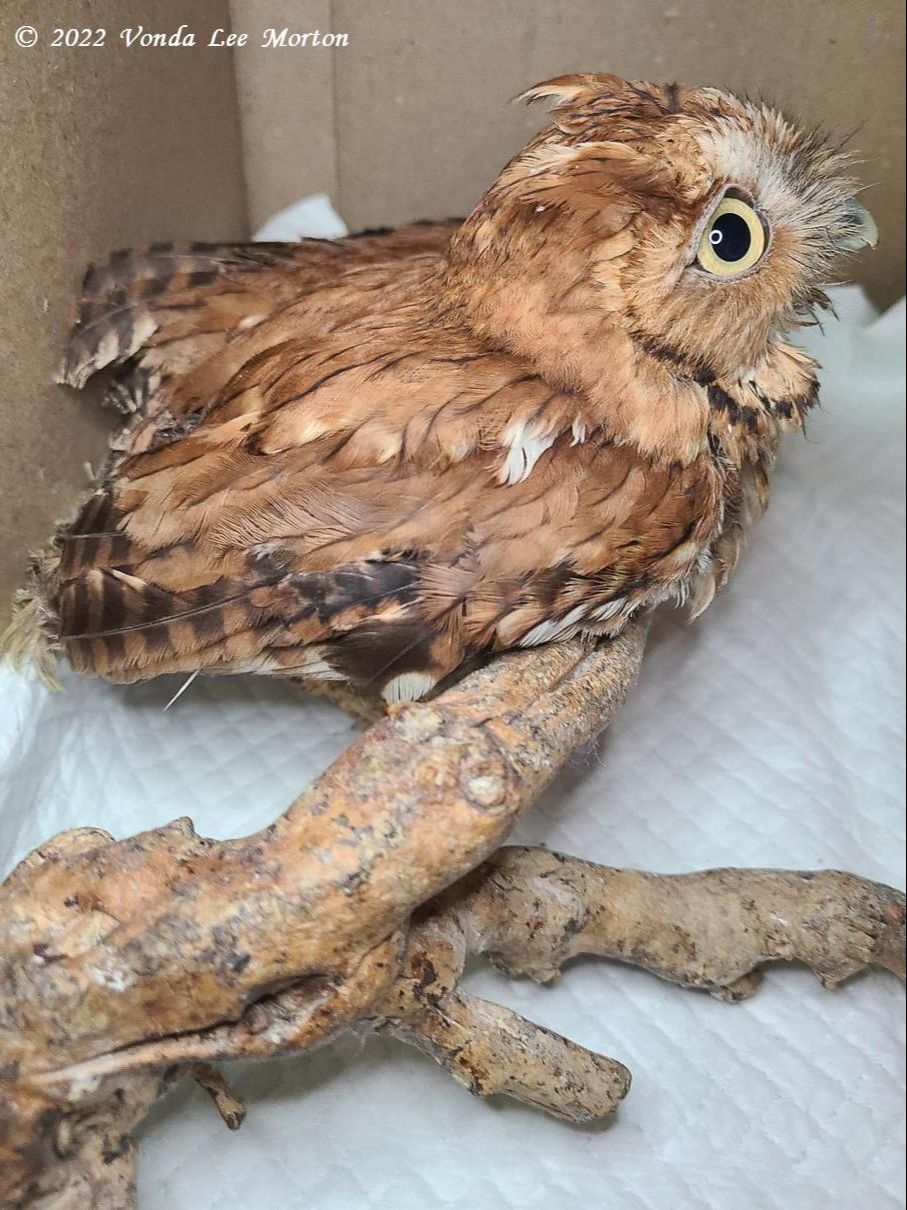
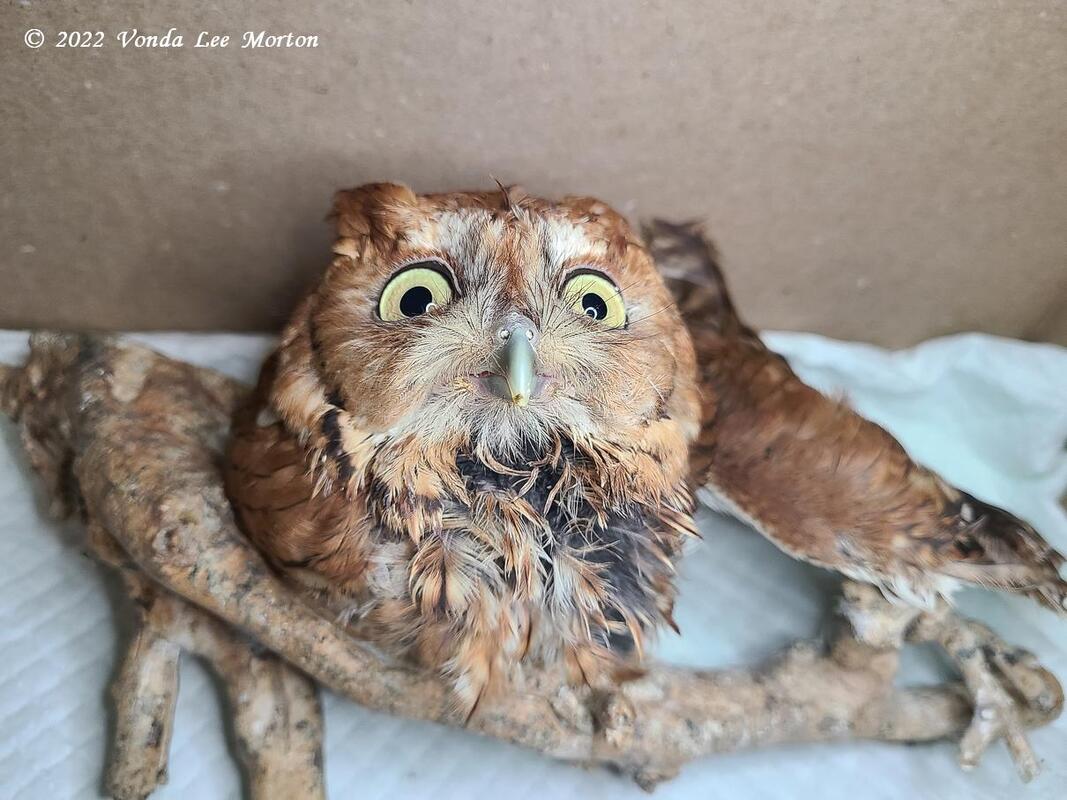
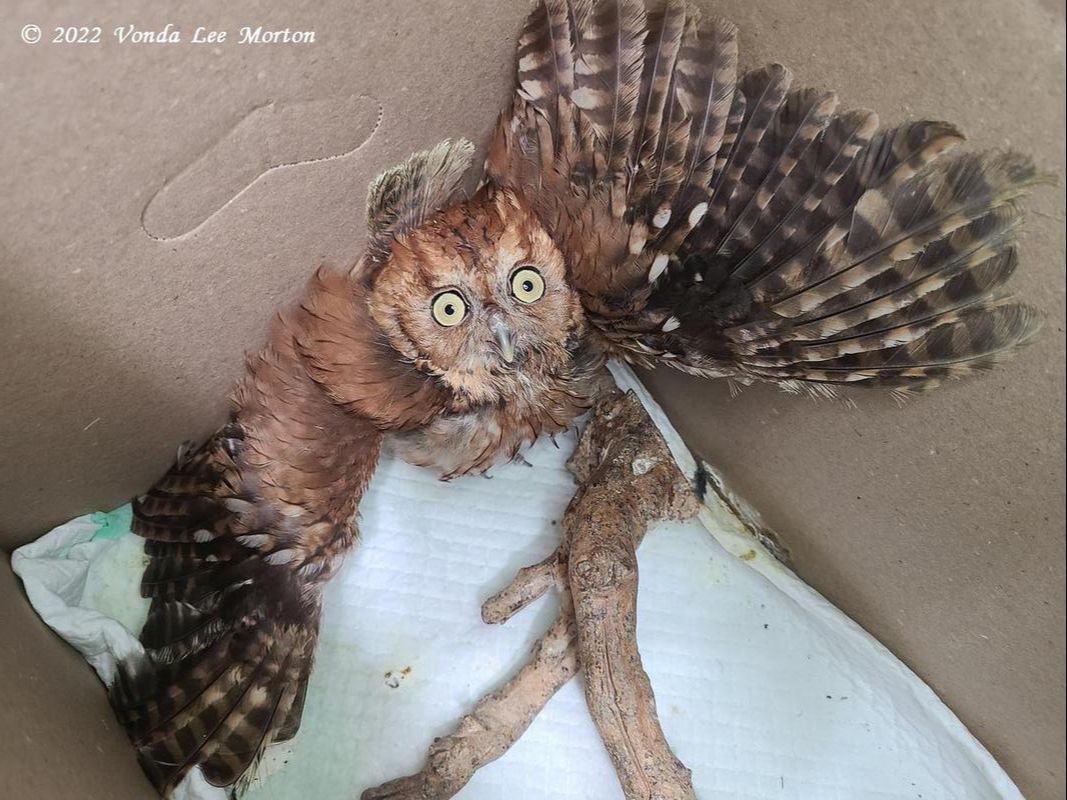
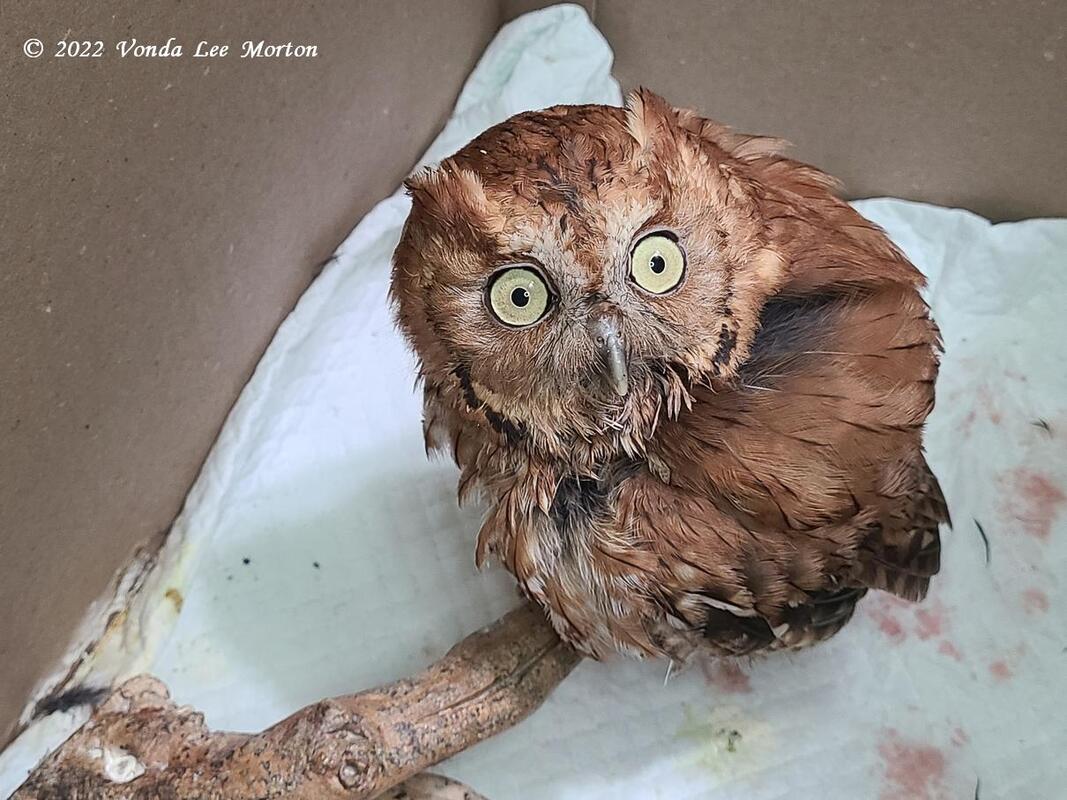
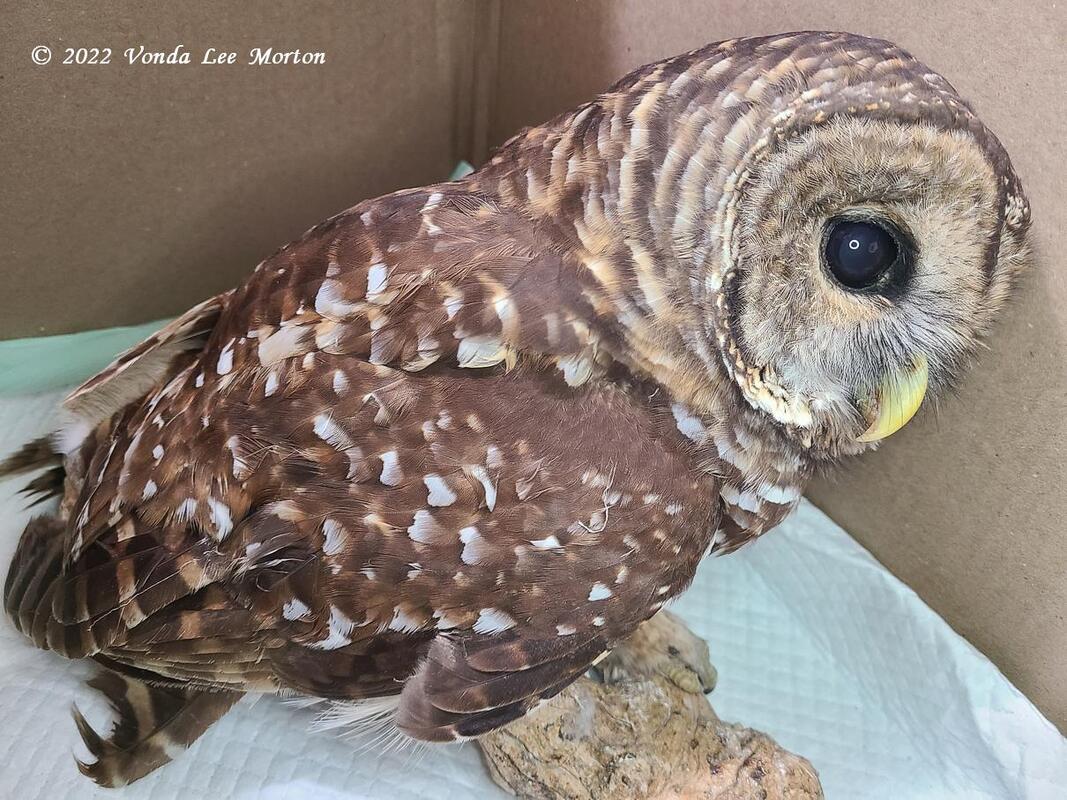
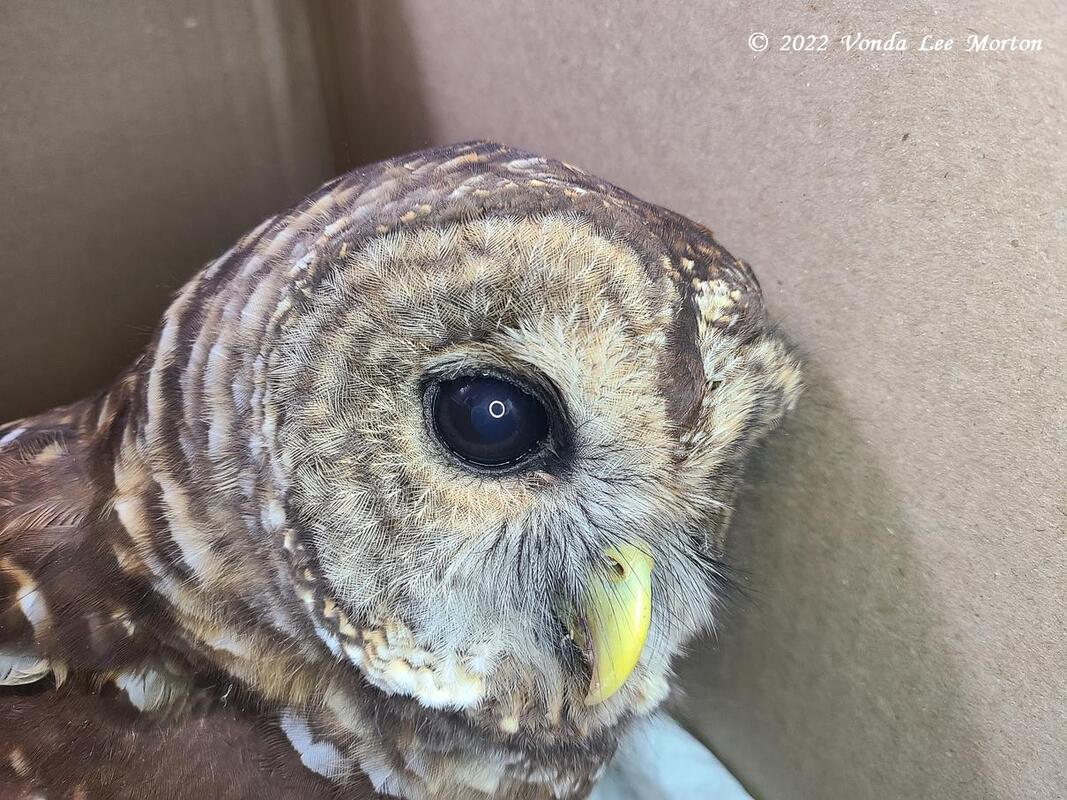
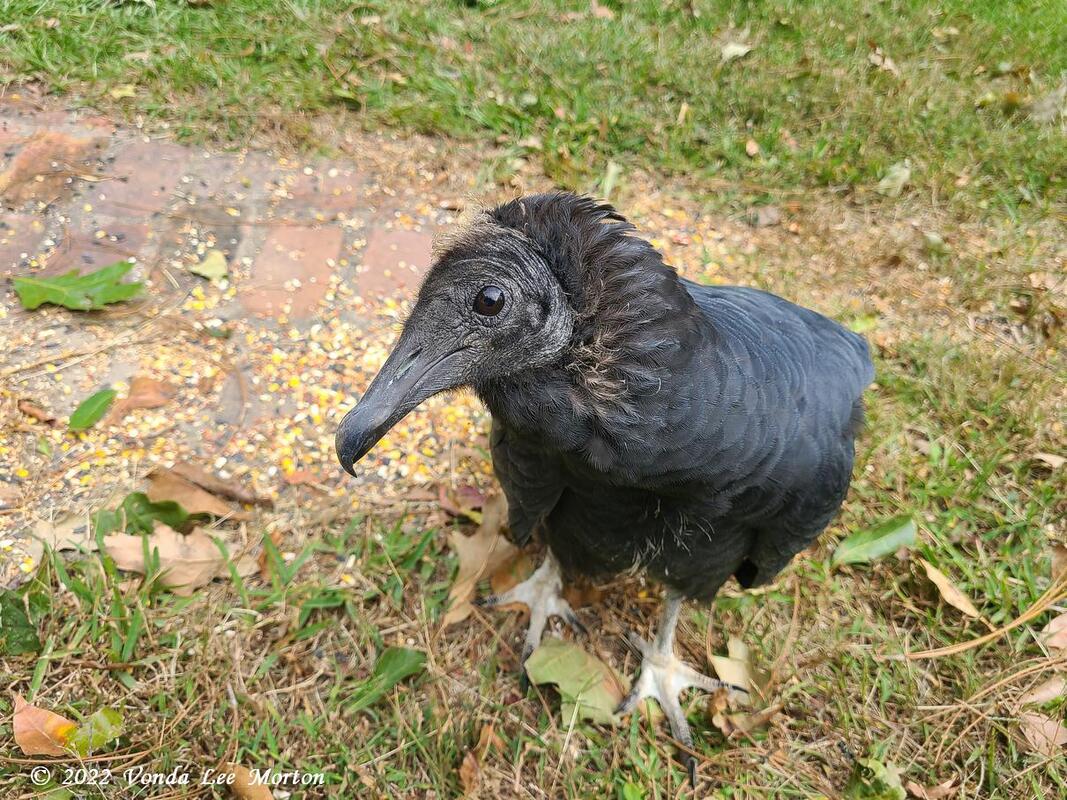
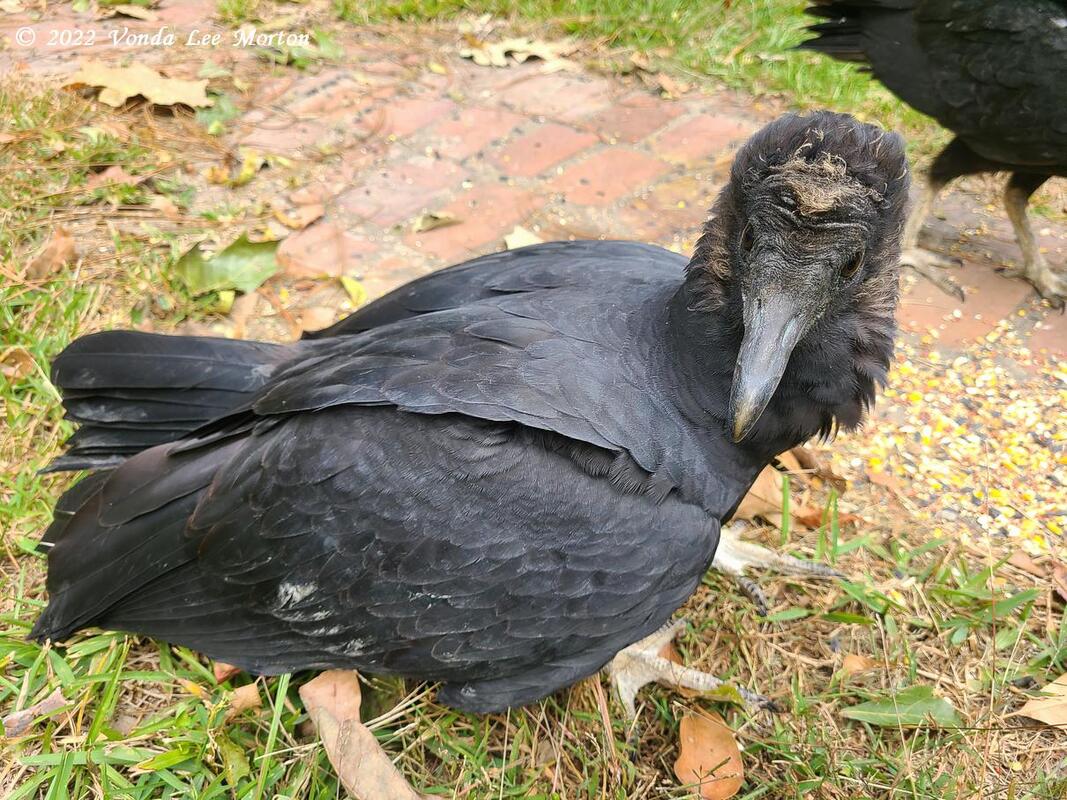
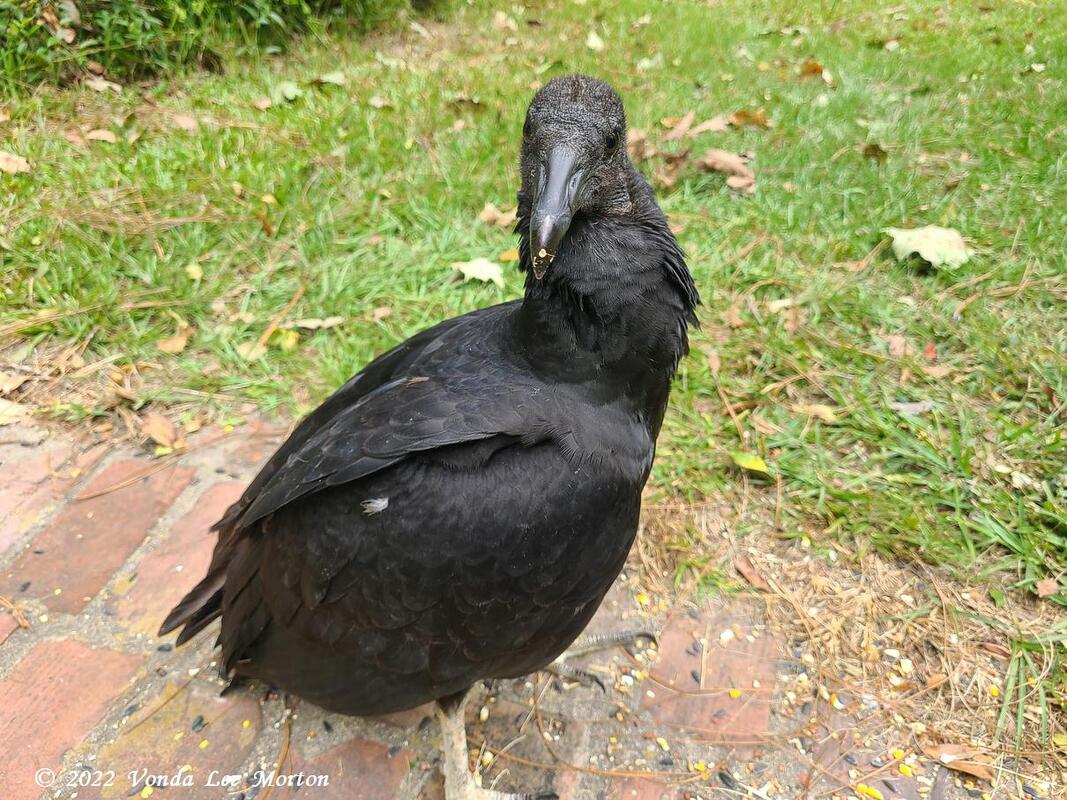
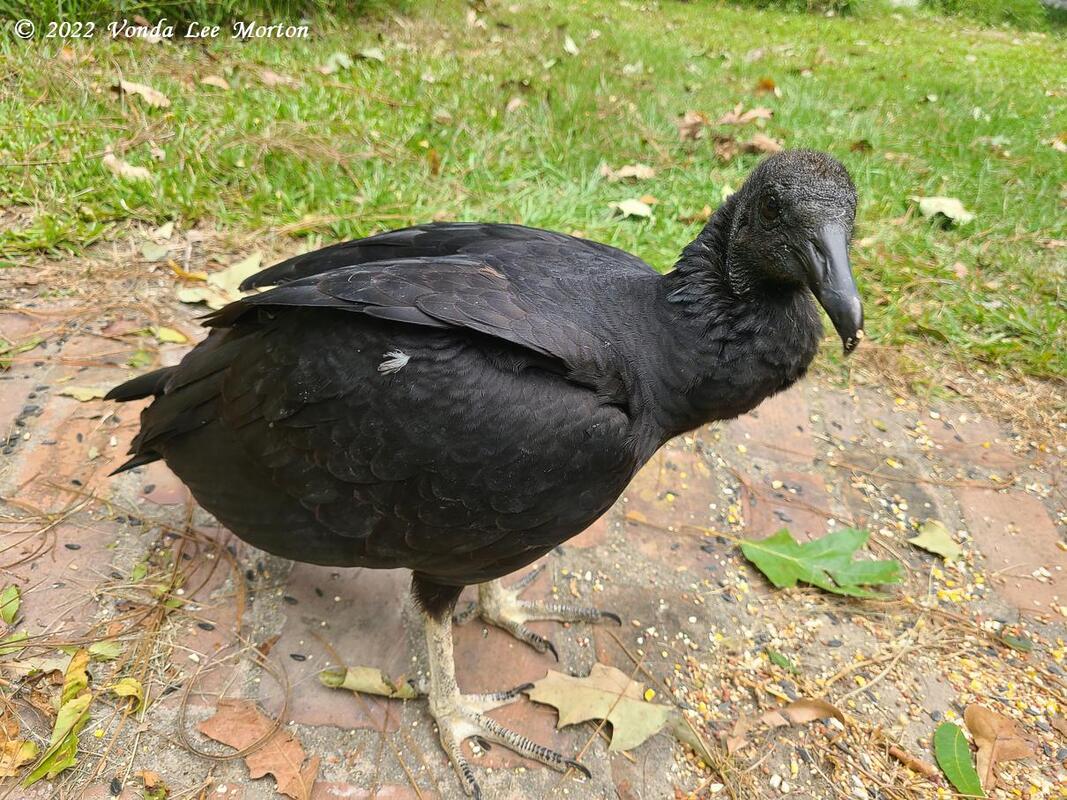
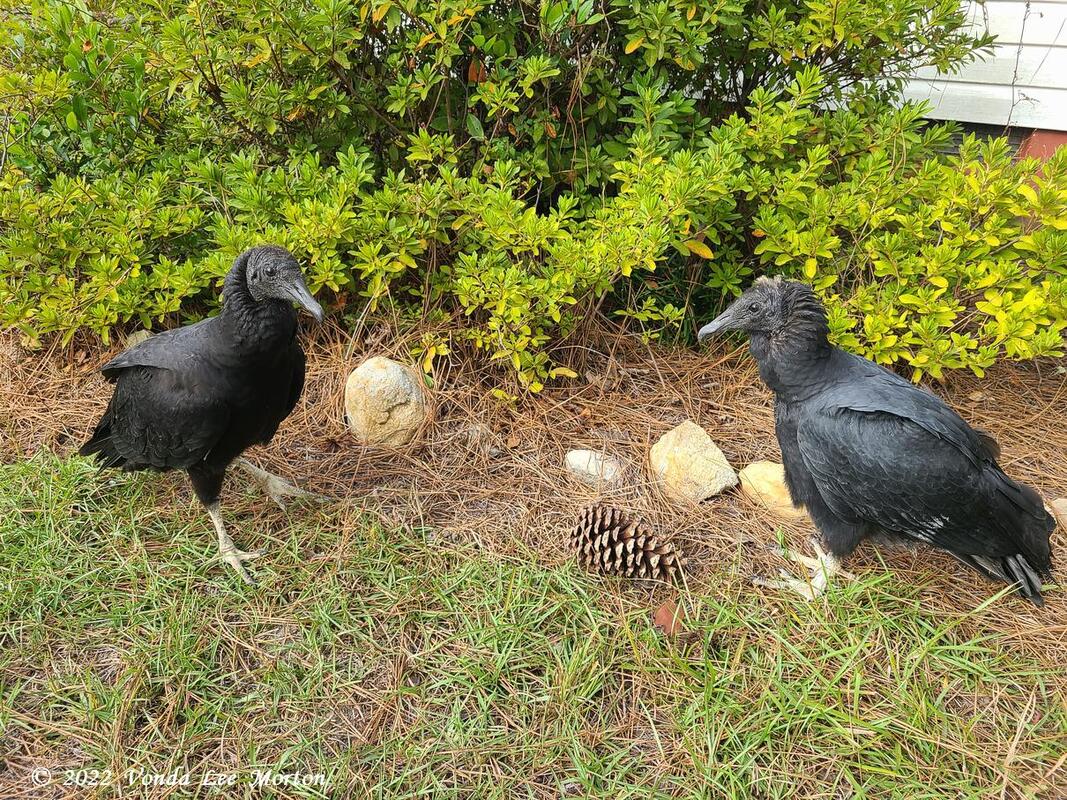
 RSS Feed
RSS Feed
